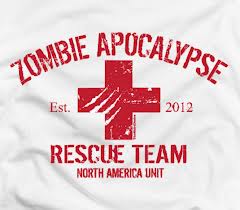EHRs: Help or Hype? Saturday, Feb 10 2018
EHR and Electronic Health Record and Electronic Medical Record and EMR and Health Plans and Insurance and Medical Practice Management and Medicare and Operations and Reimbursement 7:23 pm
Annual Demographics Update Monday, Jan 9 2017
Health Plans and Insurance and Medical Practice Management and Operations and Reimbursement 6:47 pm
In an effort to provide an explanation of the various reasons that we update demographics, we are offering this information to try to help reduce frustration for our patients and staff. Many people think completing the demographics form is only for billing purposes; however, we update patient information for both clinical and insurance reasons as well.
First and foremost, our clinical staff relies on the most current patient demographics to reach patients to communicate results of tests and to schedule patients for follow-up appointments. Initially, they make several attempts using all phone numbers provided. We have experienced phones disconnected and voicemail boxes full, which will then result in our attempt to reach a patient by mailing a note asking the patient to call our office. The last option is to try the patient’s emergency contact and explain that we have an important message. We do not divulge any confidential information unless we have a signed Designated Party Authorization.
In addition, we need to provide current information to specialists when we are referring patients, as well as for prior authorizations for prescriptions, procedures, and testing. These are the primary clinical reasons for having the patient update their information on a regular basis.
From an insurance perspective, it is our contractual obligation with insurance companies to maintain accurate records and current patient demographics to provide the best care. We are audited by all health plans several times a year for Quality Measures and frequently are required to show proof of current information on file.
Roughly 25-30 years ago, patients would pay for their medical services and the physician’s office would give them a bill to submit their own insurance for reimbursement. Now, with participation contracts, the healthcare provider extends credit while we wait for the insurance company to process and pay the claim.
To file a claim, and receive the insurance reimbursement, we have to have the patient sign an “Assignment of Benefits” authorizing their insurance company to send the reimbursement to the provider rather than the patient. This Assignment of Benefits is part of our demographic update form.
We, like all businesses, try to keep our expenses down and make every effort to collect for all services rendered. We need current addresses to mail statements for balances due. Phone numbers are required for the collection process as well. Even though we update this information, we still receive returned mail that is unable to be forwarded, which requires our staff to invest time determining the patient’s new address and/or telephone number. Each statement mailed can cost up to $2.00 per envelope. The Billing and Collection process can be even more costly if we are unable to locate the patient and they end up in outside collection because the collection company charges a substantial percentage to collect the balance due.
We dislike the extra workload as much as the patient dislikes completing the form. Please be assured that we have only included the minimum necessary for the patient to update to make it a bit easier. We appreciate our patients’ consideration and effort.
Rule-Out, Probable, and Possible: Importance in Documentation Guidelines Friday, Dec 19 2014
Coding and Reimbursement Billing, Coding, Diagnosis coding, Documentation Guidelines, Health Care Reimbursement, insurance reimbursement, medicine, patient, Physician Practice, Reimbursement 7:36 pm
 Rule out: Term used in medicine, meaning to eliminate or exclude something from consideration. For example, a normal chest x-ray may “rule out” pneumonia.
Rule out: Term used in medicine, meaning to eliminate or exclude something from consideration. For example, a normal chest x-ray may “rule out” pneumonia.
Many of us in health care have always heard the directive “never code a rule-out, possible, or probable”, which is true for coding the diagnosis! However, when coding for Evaluation & Management, it is extremely helpful to document any illnesses/injuries that the physician is ruling out because that will support the physician’s medical decision making and will guide the non-clinical/administrative personnel in the physician’s thought processes.
In the “Medical Decision Making-Diagnoses or Management Options” section of the Documentation Guidelines, CMS specifically states, “For a presenting problem without an established diagnosis, the assessment or clinical impression may be stated in the form of differential diagnoses or as a “possible”, “probable”, or “rule out” (R/O) diagnosis.” (http://www.cms.gov/Outreach-and-Education/Medicare-Learning-Network-MLN/MLNProducts/downloads/eval_mgmt_serv_guide-ICN006764.pdf ; page 44)
In addition, CMS states, in the same document (page 43):
“C. DOCUMENTATION OF THE COMPLEXITY OF MEDICAL DECISION MAKING
The levels of E/M services recognize four types of medical decision making (straightforward, low complexity, moderate complexity and high complexity). Medical decision making refers to the complexity of establishing a diagnosis and/or selecting a management option as measured by:
• the number of possible diagnoses and/or the number of management options that must be considered;”
I highly encourage all physicians and mid-level providers to include their thought processes in their documentation guidelines. Remember, many of the “bean-counters” that decide the appropriateness of your documentation are not clinical!
At Odds With Others: Hang up the gloves and start talking Thursday, Jan 2 2014
Human Resources and Medical Practice Management and Operations conflict, conflict resolution, Employee, Human Resources, medical practice, Personnel, staff 5:42 pm
This article appeared in the March/April 2008 issue of CMA Today the monthly magazine published by the American Association of Medical Assistants (AAMA). It was written by Cathy Sivak.
This article is regarding conflict with others in the office environment and is increasingly a challenge for every office.
“Meaningful conflict actually enhances communications by relating the expectation up front between the parties. Communication can be painful, you may have to correct somebody, but in the end you gain more respect from each other,” says Charlene Burgett, MSHCM, CMA (AAMA), CPC, CMSCS
AT ODDS WITH OTHERS Article CMA Today

Getting ready for the Zombie Apocalypse Tuesday, Mar 12 2013
Coding Diagnosis coding, ICD, ICD-10 9:32 pm
I am a fan of The Walking Dead show and graphic novels! I love all things Zombie!! So, when I saw that someone created ICD-10 codes for a Zombie Apocalypse, I was absolutely thrilled! Here’s the link to see what was dreamed up:
http://www.findacode.com/aprilfools/icd-10-cm-chpt-22-draft.pdf
Enjoy!!!
2012 in review Sunday, Dec 30 2012
Uncategorized 4:57 pm
The WordPress.com stats helper monkeys prepared a 2012 annual report for this blog.
Here’s an excerpt:
600 people reached the top of Mt. Everest in 2012. This blog got about 12,000 views in 2012. If every person who reached the top of Mt. Everest viewed this blog, it would have taken 20 years to get that many views.
What Insurance Companies Don’t Want You to Know! Friday, Oct 26 2012
COBRA and Coding and Compliance and ERISA and Health Care Reform and Health Plans and Insurance and Medical Practice Management and Operations Billing, COBRA, Coding, Compliance, doctor, ERISA, health, Health Care, Health Care Reimbursement, Health Plan, health reform, Insurance, insurance reimbursement, medical practice, patient, physician, Physician Practice, Reimbursement 2:44 pm
Finally! A long awaited and much anticipated book about ERISA by two well-respected leaders in the health care industry! This book will provide the secrets in getting claims paid, how to fight denials, and halt recoupments using the features within the ERISA regulations.
This is a must buy! Quite frankly, this is important even if you are a layperson covered under your employer’s group health plan! These are the secrets that your insurance company doesn’t want you or your doctor’s office to know!
Book Description
You can purchase through Amazon by clicking on this link:
http://www.amazon.com/The-Medical-Practice-Guide-ERISA/dp/0988304007/ref=pd_rhf_cr_p_t_1
OAISYS Call Recording Case Study Tuesday, Oct 2 2012
Medical Practice Management and Operations Health Care, medical practice, Physician Practice 8:40 pm
A few years ago, I did a video case study for OAISYS on their call recording solutions. I never thought, until now, to include it on my blog…here goes!
http://www.youtube.com/watch?v=R6Ikzy87h5A&feature=plcp
ICD-10-CM implementation date is October 1, 2014 Saturday, Sep 1 2012
Coding and Compliance and Health Care Reform and Insurance and Medical Practice Management and Medicare and Reimbursement Billing, Coding, Compliance, doctor, Health Care, Health Care Reimbursement, Health Plan, health reform, ICD, ICD-10, Insurance, insurance reimbursement, medical practice, Medicare, physician, Physician Practice, Reimbursement 9:57 am
The final rule setting the ICD-10-CM implementation date as October 1, 2014 was released by the Centers for Medicare & Medicaid Services (CMS) on August 24, 2012.







